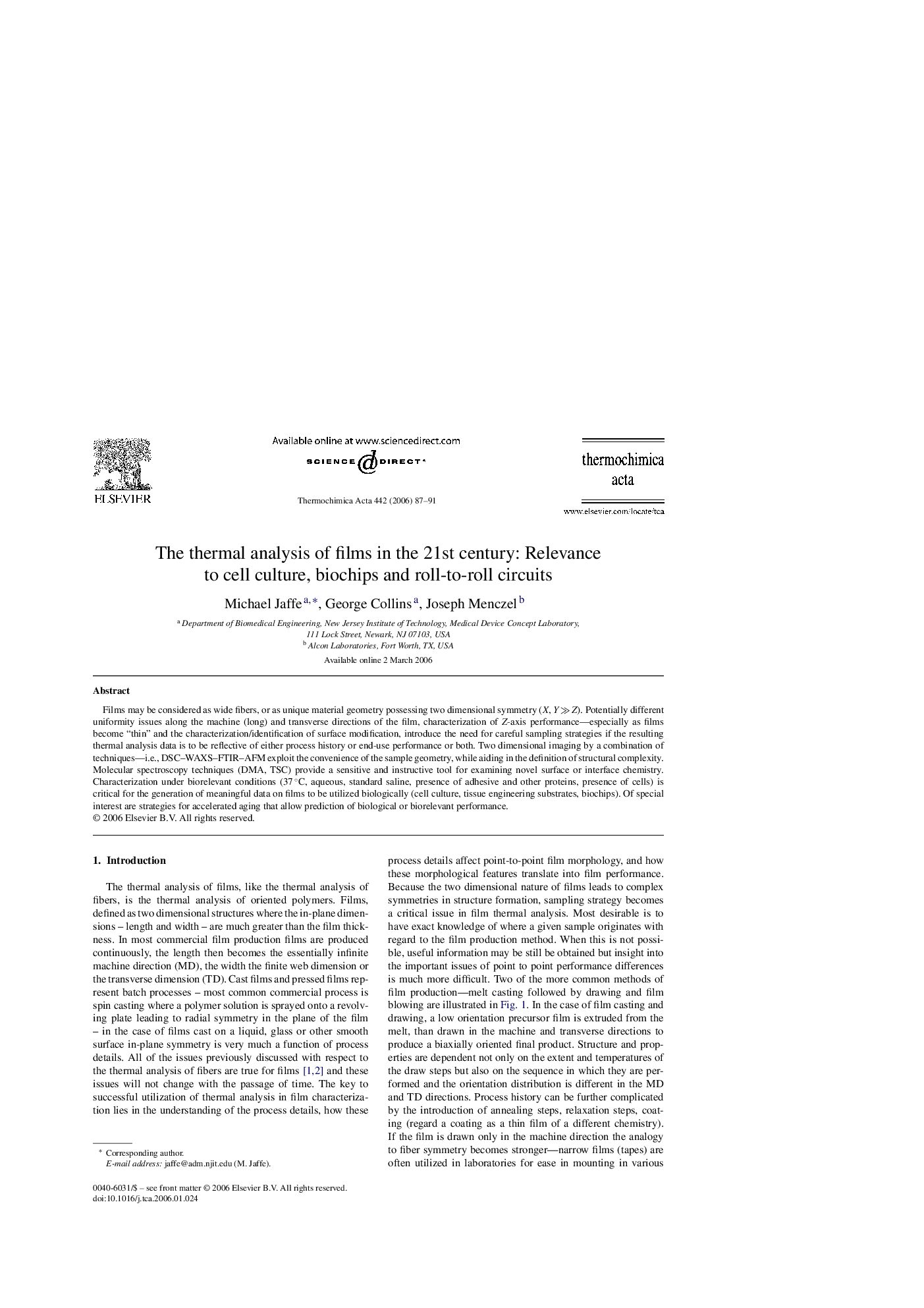| Article ID | Journal | Published Year | Pages | File Type |
|---|---|---|---|---|
| 676021 | Thermochimica Acta | 2006 | 5 Pages |
Abstract
Films may be considered as wide fibers, or as unique material geometry possessing two dimensional symmetry (X, Y â«Â Z). Potentially different uniformity issues along the machine (long) and transverse directions of the film, characterization of Z-axis performance-especially as films become “thin” and the characterization/identification of surface modification, introduce the need for careful sampling strategies if the resulting thermal analysis data is to be reflective of either process history or end-use performance or both. Two dimensional imaging by a combination of techniques-i.e., DSC-WAXS-FTIR-AFM exploit the convenience of the sample geometry, while aiding in the definition of structural complexity. Molecular spectroscopy techniques (DMA, TSC) provide a sensitive and instructive tool for examining novel surface or interface chemistry. Characterization under biorelevant conditions (37 °C, aqueous, standard saline, presence of adhesive and other proteins, presence of cells) is critical for the generation of meaningful data on films to be utilized biologically (cell culture, tissue engineering substrates, biochips). Of special interest are strategies for accelerated aging that allow prediction of biological or biorelevant performance.
Related Topics
Physical Sciences and Engineering
Chemical Engineering
Fluid Flow and Transfer Processes
Authors
Michael Jaffe, George Collins, Joseph Menczel,
